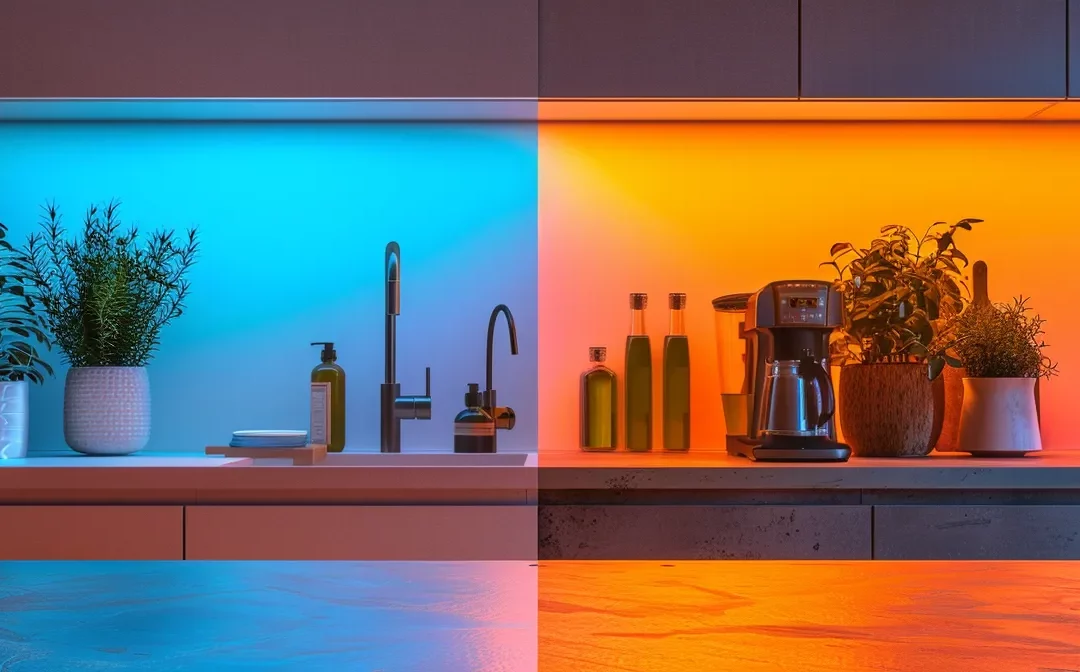Table Of Contents:
- Key Takeaways
- Discover How Benchtop Resurfacing Revamps Your Kitchen
- Explore the Benefits of Resurfacing Over Replacing
- Choose the Perfect Materials for Benchtop Resurfacing
- Choose the Perfect Materials for Benchtop Resurfacing
- Follow a Step-by-Step Guide to Resurface Your Benchtop
- Learn Tips to Maintain Your Resurfaced Benchtop
- Avoid Common Mistakes in Benchtop Resurfacing
- Conclusion
Is your kitchen feeling outdated and uninspired? You’re not alone. Many homeowners struggle with tired-looking benchtops that detract from their beautiful kitchen cabinets. In this post, we’ll explore how benchtop resurfacing can give your kitchen a fresh new look without the hassle of replacement. You’ll learn the benefits of resurfacing compared to replacing, the best materials to choose, and tips for maintaining your resurfaced benchtop. By addressing common concerns like dust and adhesive issues, you’ll discover practical solutions to elevate your kitchen’s style and functionality.
Key Takeaways
- benchtop resurfacing revitalizes kitchens without the need for a complete remodel
- proper surface preparation is critical for successful resurfacing results
- environmental impact is minimized by resurfacing instead of replacing countertops
- regular maintenance prolongs the lifespan of resurfaced benchtops
- choosing the right materials enhances both durability and aesthetic appeal in your kitchen
Discover How Benchtop Resurfacing Revamps Your Kitchen
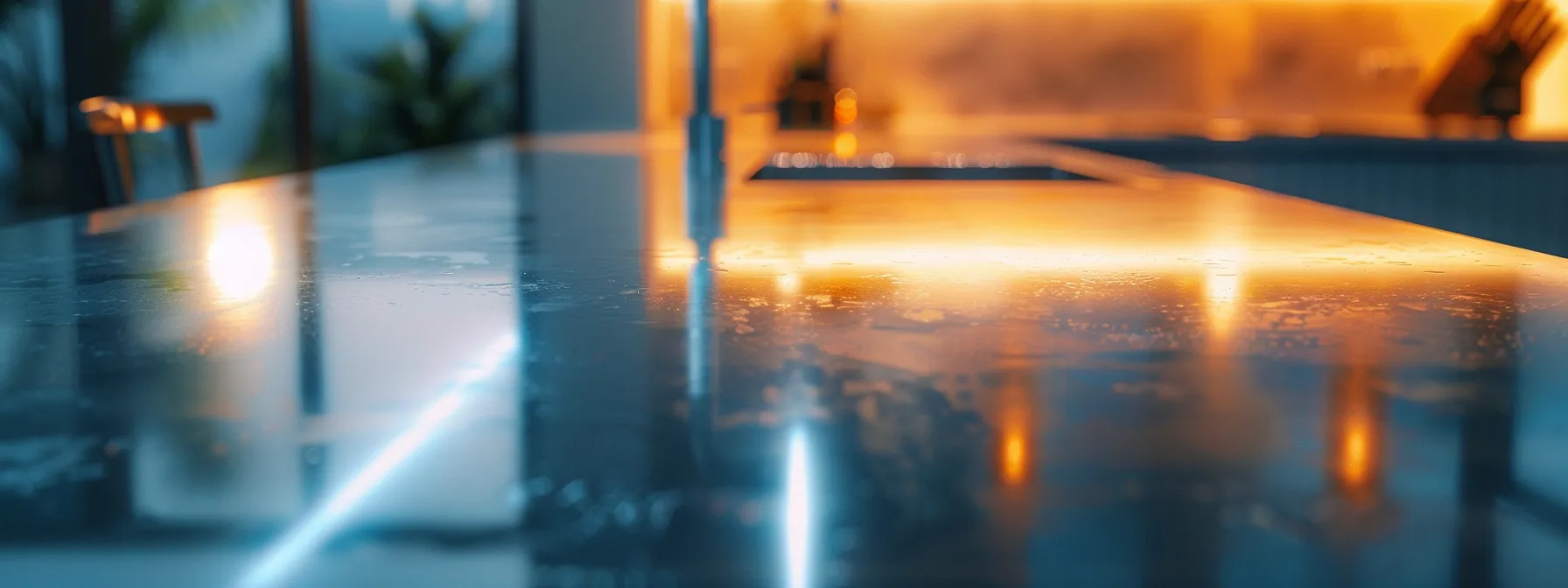
Benchtop resurfacing is a smart solution for revitalizing your kitchen without a complete remodel. You’ll learn what this process entails, including the use of foam and epoxy materials. Additionally, you’ll discover how to identify signs that your benchtop needs resurfacing, such as mold growth or significant wear.
This information will provide you practical insights, enabling you to determine if resurfacing can transform your kitchen from tired to inspired.
Understand What Benchtop Resurfacing Involves
Benchtop resurfacing is an effective method to rejuvenate your kitchen’s surfaces, especially when working with F Imagine materials like granite or formica. This process involves applying a specially formulated coating, typically polyurethane, over existing countertops to restore their appearance. Instead of replacing your cabinetry, resurfacing breathes new life into tired spaces, making it an economical choice for homeowners seeking a kitchen makeover.
The application of this technique requires skill and precision. Professionals meticulously prepare the surface by cleaning, sanding, and priming the area to ensure optimal adhesion of the new finish. By using high-quality epoxy and polyurethane materials, you can achieve a polished look that rivals new installations, all while reducing waste and avoiding the disruption of a full renovation.
To effectively evaluate your benchtop for resurfacing, you should look for signs of wear such as scratches, stains, or even mold. If your countertops exhibit these issues, resurfacing can provide a seamless solution that not only improves aesthetics but also extends the lifespan of your surfaces. Understanding this process empowers you to make informed decisions about transforming your kitchen into a stunning space:
Identify Signs Your Benchtop Needs Resurfacing
When assessing your kitchen benchtop, look for noticeable wear and tear, such as scratches or stains. These imperfections can compromise the appearance of solid surface materials, making your kitchen feel outdated. If you notice excessive wear around areas like your sink, it may indicate that resurfacing is a necessary solution to restore both function and aesthetics.
Another sign that your benchtop may need resurfacing is the presence of mold or mildew, particularly in grout lines or other crevices that can trap moisture. This not only poses a hygiene issue but can also lead to further damage if left untreated. Addressing these problems promptly through resurfacing can provide a cleaner, more inviting kitchen environment.
Finally, if you find yourself using sandpaper or other tools to manage surface imperfections constantly, it’s time to consider resurfacing options. A properly resurfaced benchtop can alleviate the need for frequent maintenance while enhancing the overall beauty of your kitchen. By taking action now, you can transform a tired space into one that feels fresh and modern.
Benchtop resurfacing can give your kitchen a fresh start. Next, see why resurfacing is often smarter than replacing.
Explore the Benefits of Resurfacing Over Replacing
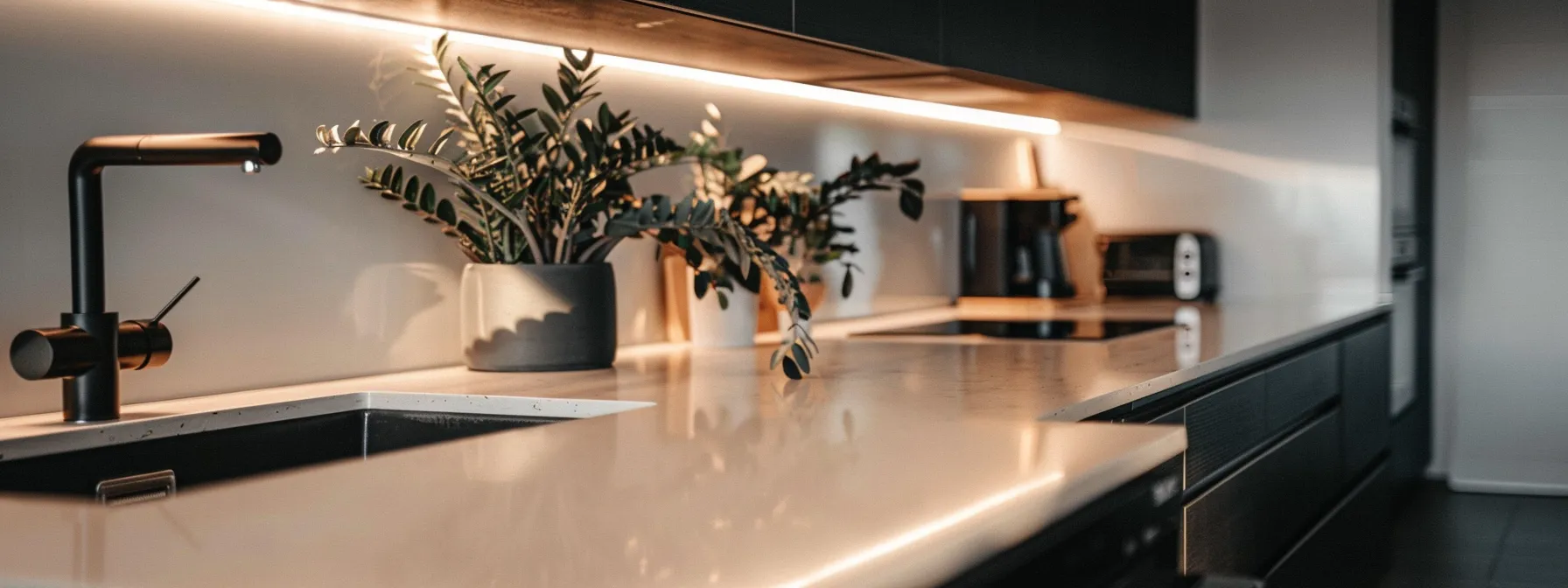
Resurfacing your benchtop offers significant benefits compared to a complete replacement. First, you can compare the costs of resurfacing and replacing quartz or other materials, which often reveals substantial savings. Additionally, you should assess the environmental impact of resurfacing, as this process reduces waste associated with full remodels. Next, you’ll learn about practical techniques for maintaining your surfaces, whether it’s simply applying a fresh coat or addressing water damage effectively.
Compare Costs of Resurfacing and Replacing Benchtops
When deciding between resurfacing and replacing your benchtop, cost is a significant factor. Resurfacing is generally less expensive, often costing only a fraction of what full renovation requires. For example, if you’re looking at replacing a tile benchtop entirely, you may be faced with higher expenses due to the materials and labor involved in a complete remodel.
In addition to the financial savings, resurfacing minimizes the amount of waste generated during a renovation. By simply applying a new coat over your existing counter, you avoid the mess and disposal costs associated with a complete removal and replacement. This approach not only preserves your budget but also reduces the environmental impact of your remodeling project.
Lastly, maintaining a resurfaced benchtop is straightforward compared to managing the wear and tear of a new installation. If stains or minor damage occur, a simple touch-up can make your kitchen look fresh again. This ease of upkeep means less time and money spent on ongoing maintenance, allowing you to fully enjoy your revitalized kitchen space:
Assess the Environmental Impact of Resurfacing
Resurfacing your benchtop can significantly reduce the environmental impact of your kitchen renovation. By keeping your existing countertop intact, you minimize waste generated from removing old materials, such as oak or laminate. This approach is less disruptive to the room and helps conserve resources that would otherwise be used in creating new countertops.
The process of resurfacing utilizes durable materials like epoxy that can prolong the life of your surfaces, making it a sustainable option. Unlike a full replacement, which may require new cabinetry or features such as a dishwasher, resurfacing allows you to maintain the integrity of your current setup. This not only conserves energy but also reduces the overall carbon footprint associated with manufacturing and transporting new materials.
Choosing to resurface rather than replace also encourages better long-term practices for maintaining your kitchen. You can easily address any scratches or imperfections without discarding your entire countertop, keeping your space functional and visually appealing. This sustainable choice not only enhances the look of your kitchen but also aligns with environmentally responsible living, ensuring your home remains a healthy space for years to come.
Resurfacing breathes new life into tired spaces, but the right materials make all the difference. Discover how to select the perfect options for your benchtop resurfacing and elevate your kitchen’s appeal.
Choose the Perfect Materials for Benchtop Resurfacing
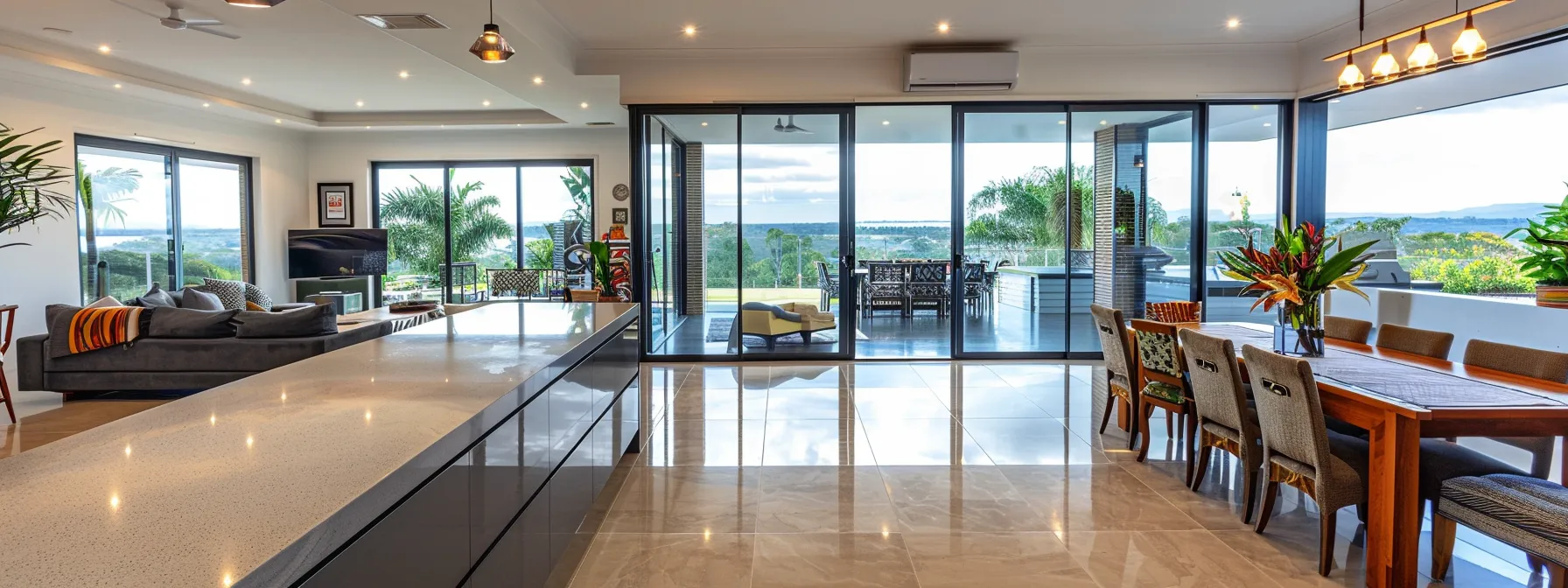
Choose the Perfect Materials for Benchtop Resurfacing
Selecting the right materials is key to achieving a successful kitchen makeover. You can choose from a variety of resurfacing materials that not only enhance durability but also match your kitchen’s aesthetic. Whether opting for wood finishes or sleek epoxy, a well-chosen material will elevate your home improvement project and create a cohesive look throughout your space.
In the following sections, you’ll explore how different materials can transform your kitchen’s appearance and functionality, as well as tips for using finishes that complement your overall design.
Select From a Variety of Resurfacing Materials
When selecting materials for benchtop resurfacing, consider options like metal and particle board. Metal surfaces can add a modern touch and are known for their durability and resistance to wear. Particle board, on the other hand, offers versatility and a cost-effective solution for those looking to refresh their kitchen without extensive renovations.
Using the right tools is essential in the resurfacing process. A sander will help prepare the surface effectively, ensuring a smooth and clean area for applying your chosen materials. The right sanding technique will enhance the adhesion of the new finish, making your resurfacing project more successful and providing a long-lasting result.
Pay attention to how different materials suit your kitchen’s overall design. Mixing finishes can create a unique look, while ensuring that the functionality meets your everyday needs. By choosing complementary surfaces, you can transform your kitchen into a space that feels both refreshed and harmonized:
- Assess the desired style – modern or classic.
- Evaluate the durability of metal vs. particle board.
- Ensure proper preparation with sanding tools.
- Consider maintenance requirements for each material.
- Mix surfaces for a personalized touch.
Match Finishes to Your Kitchen’s Aesthetic
When choosing finishes for your benchtop resurfacing project, consider how they will complement your kitchen’s existing design elements, such as wood flooring or ceiling styles. For instance, if your kitchen features dark wood flooring, a lighter marble finish may provide a striking contrast, creating an inviting atmosphere. This thoughtful approach will not only enhance visual appeal but also create a cohesive look throughout your space.
Using materials like butcher block can introduce warmth and texture to your kitchen, especially if you have a contemporary style. When combined with other finishes, such as sleek epoxy, you can achieve a modern yet inviting kitchen that feels both functional and stylish. Pay attention to how each brand offers unique aesthetic options, allowing you to personalize the look of your benchtops to suit your taste.
Additionally, remember to reflect on your kitchen’s overall color scheme and features to ensure that the chosen finishes harmonize with each other. For example, a mix of elegant marble and rustic wood not only enhances the character of your kitchen but also adds a layer of depth to its design. By carefully matching finishes, you will transform a once tired kitchen into one that truly inspires and captivates those who enter it.
Now that you’ve selected the ideal materials for your benchtop, it’s time to take the next step. Follow this clear guide to resurface your benchtop and make it shine.
Follow a Step-by-Step Guide to Resurface Your Benchtop
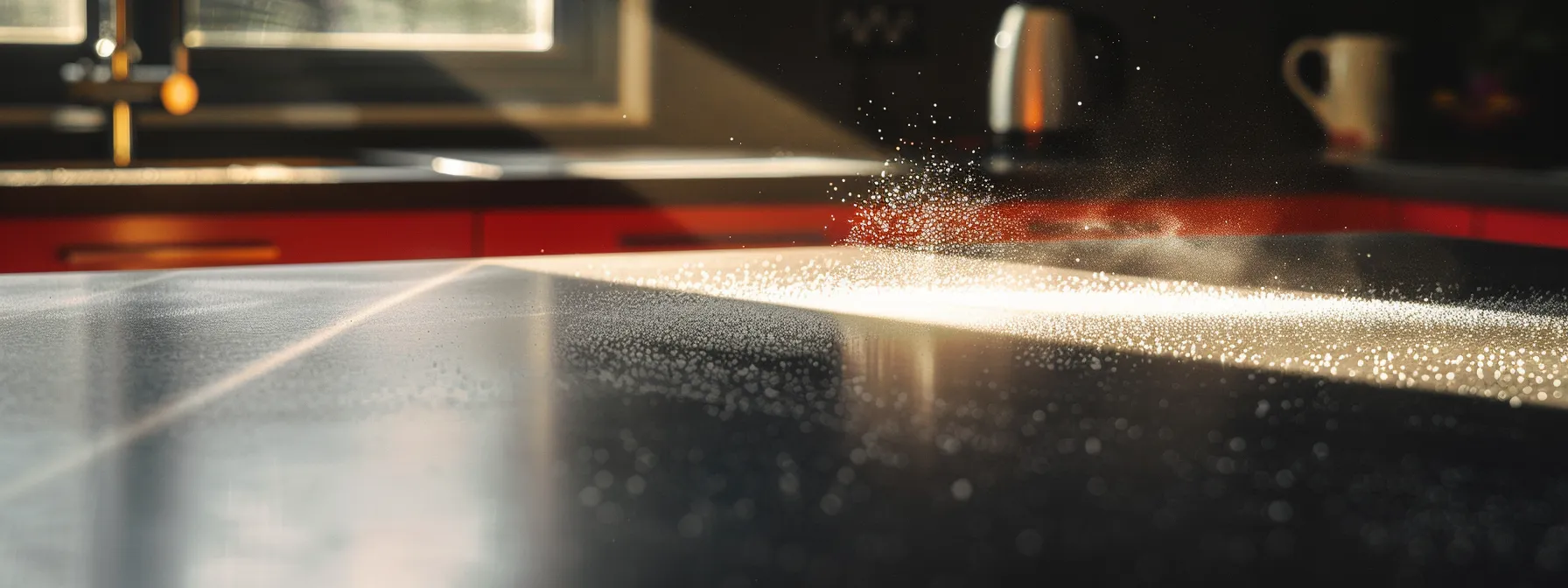
Prepare your benchtop thoroughly before starting the resurfacing process. Cleaning and sanding will ensure a proper finish, vital for lasting results. Next, you’ll apply resurfacing products correctly, whether using spray painting techniques or more traditional methods. These steps will not only revitalize your kitchen but can also enhance surfaces in other areas like your laundry room or dining room.
Prepare Your Benchtop for the Resurfacing Process
To prepare your benchtop for resurfacing, begin by thoroughly cleaning the surface to remove any grease, dirt, or residue. Use a sponge and a mild cleaner to wipe down the area, ensuring that everything is spotless. A clean surface is crucial for proper adhesion of the new coating, which will ultimately enhance the aesthetics of your kitchen as part of your interior design.
Next, focus on sanding the existing surface. This step is vital to create a rough texture that helps the resurfacing materials bond effectively. Depending on the type of material, you may need different grit sandpaper. For instance, if you are working with a laminate surface, using a medium-grit sandpaper will prepare it well for the next steps of your Bathroom and Kitchen Services project.
Finally, inspect your benchtop for any damage or imperfections that may require filling. If you come across any deep scratches or chips, consider applying an acrylic paint or a filler product designed for countertop repairs. Addressing these issues before resurfacing will ensure that you achieve a smooth, even finish, providing a stunning result when your kitchen transformation is complete.
Apply Resurfacing Products Correctly
Applying resurfacing products correctly ensures a lasting and appealing finish for your benchtop. Start by selecting a high-quality primer, as this base layer plays a crucial role in achieving optimal adhesion. If you’re working with materials like concrete or stainless steel, choosing the right adhesion methods will prevent future peeling or bubbling, enhancing the durability of your new surface.
Next, when you apply the resurfacing material, be sure to use even strokes. For smooth finishes, consider using a roller or a brush designed specifically for the type of product you choose, whether it’s polyvinyl chloride or an epoxy formulation. This attention to detail will make a significant difference in the overall appearance, allowing you to avoid uneven textures that can detract from your kitchen’s aesthetic.
After you’ve applied the resurfacing products, allowing sufficient curing time is essential for lasting results. Depending on the material you used, this might vary, so read the manufacturer’s instructions closely. Following these steps carefully will ensure that your kitchen benchtop goes from tired to inspired, providing you with a revitalized space you’ll enjoy for years to come:
- Choose a high-quality primer.
- Use even strokes for application.
- Allow proper curing time after application.
You’ve learned how to resurface your benchtop. Now, discover how to keep it looking fresh for years to come.
Learn Tips to Maintain Your Resurfaced Benchtop
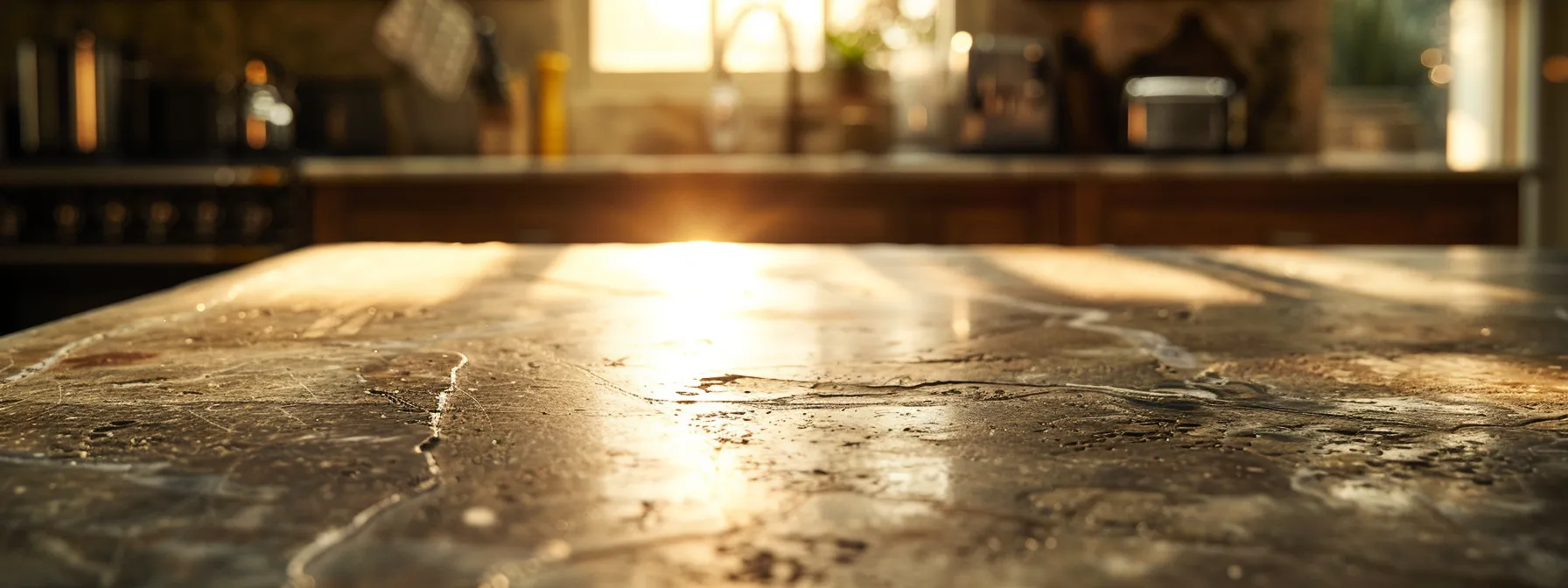
To maintain your resurfaced benchtop, it’s essential to implement proper cleaning techniques for materials like soapstone, steel, slate, and terrazzo. Additionally, protecting your benchtop from damage will prolong its lifespan and keep it looking inspired. By following these practical tips, you can ensure your kitchen surfaces remain beautiful and functional for years to come.
Implement Proper Cleaning Techniques
To maintain your resurfaced benchtop, start by implementing proper cleaning techniques tailored to the specific materials used in your kitchen. For surfaces such as epoxy, use a mild soap solution with warm water and a soft cloth or sponge. This method effectively removes dirt and grime while avoiding harsh chemicals that can damage the newly applied finish.
It’s important to avoid abrasive cleaning tools on your resurfaced benchtop, as they can scratch and degrade the surface over time. Instead, opt for non-abrasive cleaning pads or microfiber cloths that will protect the integrity of the finish. Regularly wiping down your benchtop after use can prevent residue buildup and keep it looking vibrant.
In addition to cleaning, consider using cutting boards and trivets to protect your benchtop from scratches and heat damage. These small adjustments in your kitchen habits can significantly prolong the life of your resurfaced surfaces. By taking these practical steps, you ensure that your revitalized kitchen remains both functional and aesthetically pleasing for years to come.
Protect Your Benchtop From Damage
To protect your resurfaced benchtop from damage, make it a habit to use cutting boards whenever you prepare food. This simple practice minimizes scratches and maintains the sleek appearance of your surface. Even minor cuts can lead to larger problems over time, so safeguarding your benchtop is essential for its longevity and functionality.
Consider placing trivets under hot pots and pans to prevent heat damage. The resurfacing materials are durable but can still be affected by extreme temperatures. By incorporating these easy precautions into your cooking routine, you’ll help ensure your kitchen remains inviting and your benchtop stays in excellent condition.
Additionally, regular cleaning is vital for protecting your resurfaced benchtop. Use mild detergents and avoid abrasive scrubbing pads that can scratch the surface. A gentle approach to maintenance keeps your kitchen looking fresh while extending the life of your benchtop, allowing you to enjoy your inspired kitchen for years to come.
Maintaining your resurfaced benchtop is key to its longevity. Next, you’ll want to learn how to steer clear of common mistakes that can undermine your efforts.
Avoid Common Mistakes in Benchtop Resurfacing
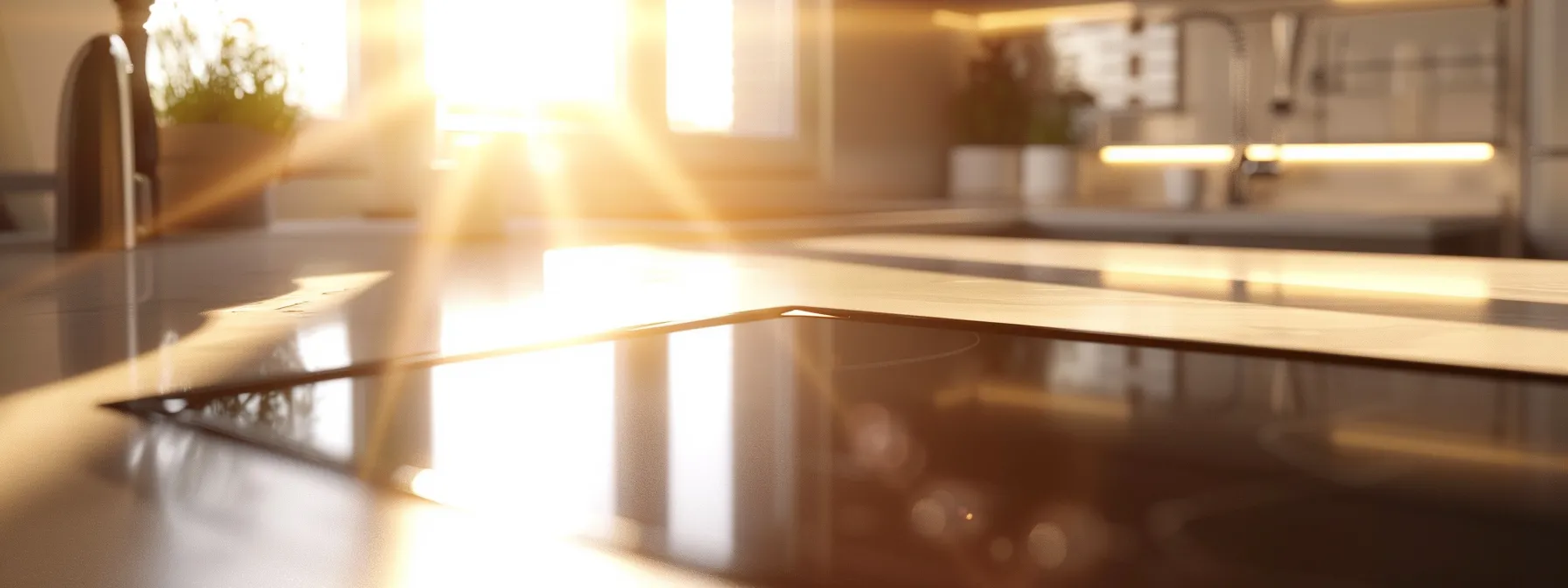
To achieve the best results in your benchtop resurfacing project, it’s essential to avoid common mistakes. First, select a qualified resurfacing professional to ensure high-quality workmanship. Next, ensure adequate ventilation during the process to promote safety and effective curing. These considerations will help you transform your kitchen into an inspired space with a polished and durable finish.
Select a Qualified Resurfacing Professional
When selecting a qualified resurfacing professional, it’s essential to evaluate their experience in the field of benchtop resurfacing. Look for service providers who specialize in resurfacing rather than general contractors, as they possess specific skills and knowledge needed for this process. This specialization ensures that they understand the intricacies of materials like epoxy and polyurethane, giving you confidence that they can handle your project effectively.
Seeking out customer reviews and testimonials can also provide valuable insights into a professional’s reliability and quality of work. Engaging with past clients can help you gauge their satisfaction levels and the durability of the resurfacing projects completed. When you hear positive feedback from others, it reinforces the professional’s capabilities and assures you that you are making an informed decision.
Lastly, don’t hesitate to ask about the warranty on the resurfacing work. A reputable professional will offer a comprehensive warranty that covers not only the materials used but also the workmanship. This warranty not only protects your investment but also demonstrates the professional’s confidence in their skills. By taking these steps, you can be sure your kitchen benchtop transformation will be handled with expertise and care, guiding you from a tired space to an inspired environment.
Ensure Adequate Ventilation During the Process
Ensuring adequate ventilation during the benchtop resurfacing process is crucial for both safety and the quality of your project. When using materials like epoxy and polyurethane, strong fumes can be released. Adequate airflow helps dissipate these fumes, reducing any health risks associated with inhalation and creating a more comfortable environment for you and any professionals working in your kitchen.
To enhance ventilation, you may choose to open windows and utilize fans to create cross-breezes around your workspace. This simple step can help maintain a fresh air supply, ensuring that the air remains breathable even while materials cure. In instances where natural ventilation isn’t possible, consider using an air purifier designed to filter out volatile organic compounds.
Good ventilation not only benefits health but also promotes faster curing times for the resurfacing materials. When air circulates effectively, the chemical reactions necessary for the finish to set can occur more smoothly, resulting in a durable and polished appearance for your revitalized kitchen. Remember these tips for a successful resurfacing process:
- Open windows to allow fresh air in.
- Use fans to improve airflow in the kitchen.
- Consider an air purifier to filter out harmful fumes.
- Monitor curing times for optimal results.
Conclusion
Benchtop resurfacing serves as an economical and sustainable solution to refresh your kitchen without the need for a complete remodel. By recognizing signs of wear and choosing high-quality materials, you can achieve a stunning transformation that enhances both functionality and aesthetics. This process not only reduces waste but also simplifies maintenance, making your revitalized kitchen a space you can truly enjoy. Embrace resurfacing today to elevate your kitchen from tired to inspired, and create an inviting environment that reflects your personal style.
